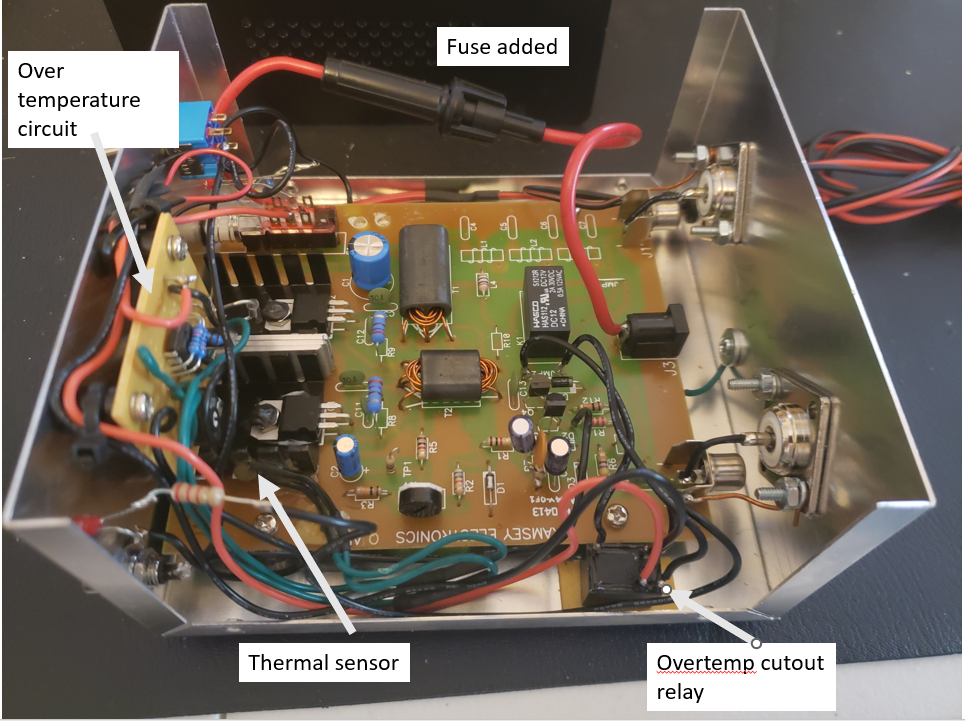- The meter uses a tandem coupler with 20:1 current sampler coils
- AD8307 log amps are used to convert RF signal amplitude from the coupler to log based DC voltage. The log amp outputs are buffered by LM358 op amps to prevent loading the log amps.
- The log amp outputs are fed to an ATTiny85 8 pin Atmel MCU. The ATTiny85 digitizes the log signals and displays output power and SWR.
- The calculated SWR and Output power are displayed on an OLED.
A blog of two hams.... Big brother is Mike, KA5VZE, in Tulsa, Oklahoma, little brother is Steve, KG5KCW, in Broken Arrow, Ok. Created for chatting about electronics projects, and maybe some woodworking and gardening too. Who knows?
Monday, February 27, 2023
SWR Meter (0): Plan for SWR meter
Saturday, February 18, 2023
Adding the transmitter switch and LP filter carrier
The radio is growing. At this point I've got the Si5153 synthesizer built, 10W amplifier, the 20m and 40m LP filters, and now I've added the TX/RX switch combined with a carrier for the LP filters.
Next up is the SWR meter. Front view of TX/RX/LPF Carrier is below. Click to enlarge
Rear view of the unit is below
Sunday, February 12, 2023
Integrating signal source, 10W amp and filters.
I am in the process of integrating the components of a homebrew radio station from stuff I've built in the last few weeks. See the photo below. Click to enlarge.
- On the left is the synthesized Si5153 signal source. It is presently programmed for 40 meters. I'm going to operate the system as a transmitter for awhile then add a receiver. For transmit, I'll add 20 meters to the Si5153 source. When I add a receiver, I'll either give it a separate Si5153 source, or reprogram the existing Si5153 to generate a separate RX source, which can be used for a direct conversion RX or a superhet.
- In the center of the photo is the 10W amp, I put SMA connectors on the input and BNC connectors on the output. Making the SMA jumpers was a big pain in the butt. So was the BNC cable. Once I build up a supply of SMA and BNC jumpers I guess things will get easier.
- The lowpass LC filters on the right. I set them in 3D printed carriers that can be dropped into a larger chassis, which I haven't built yet.
- The remaining components for this project are: 1) TX-RX switch, 2) SWR meter, 3) antenna tuner, and finally, a receiver.
Wednesday, February 8, 2023
Ramsey Q Amplifier salvage
Yesterday I went to a local electronics store here in Tulsa. The store has quite a bit of salvage electronics including old tubes and other stuff. I was looking electronic benchtop components that I could salvage for project boxes. I found three boxes with UHF connectors in the back, which I bought at salvage price. Opening them up I found a couple of amplifiers that may be useful. The first is a Ramsey Q Amplifier in what looks like a Radio Shack project box. The front view is below. Click to enlarge.
The RCA connector on the lower right is probably the enable line or for keying. The switch to upper left is the power switch, I believe the black push button switch in the lower left is for bypassing the amplifier. The back view is is shown below and is simply the RF in, RF out, and a post for attaching chassis to ground.
In the reviews of Ramsey Q Amp in eHam.net, there is quite a bit of criticism of the product and a list of fixes to make it more reliable. The circuit uses power MOSFETs as the finals, probable IRF512s, and this appears to be where most of the problems come from. Power MOSFETs are notoriously unreliable when used in linear applications. The negative threshold voltage coefficient causes thermal runaway and hot spotspots on the die. They also have VHF oscillations if the gates are high impedance.
I cannot find a schematic online for the Ramsey Q Amp so I may have to reverse engineer a schematic for it. I suspect the unit works so I look forware to testing it.






